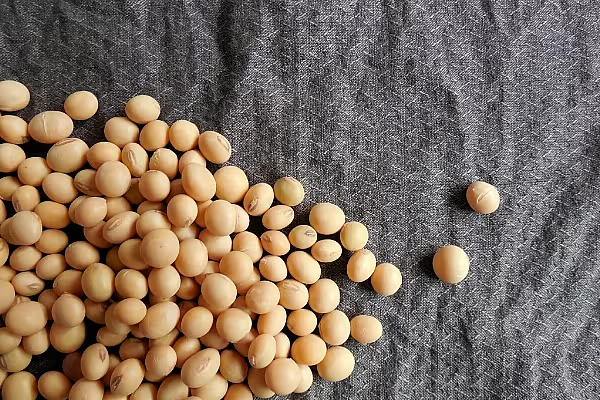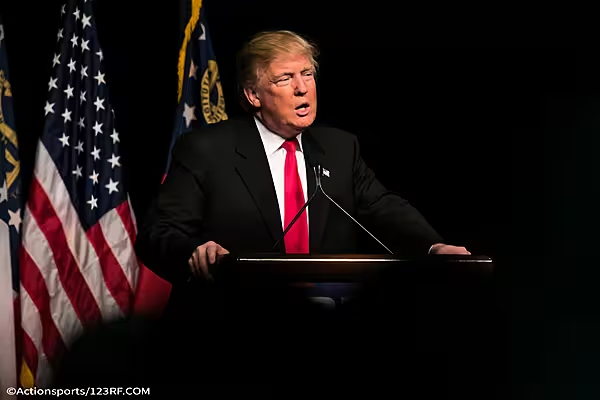Top soybean buyer China could not only end up paying more for the oilseed if it imposes tariffs on U.S. imports but may also create new buyers for American supplies as the move shakes up global trade flows.
China's voracious appetite for the bean outstrips forecast global exports, excluding the United States, so trade flows may emerge with crops from the fields of Illinois and Iowa possibly set for a detour via crushing plants in South America.
The proposal by China for a 25 percent tariff, part of its response to U.S. plans to impose tariffs on a range of Chinese products, has already driven up prices in alternative suppliers Brazil and Argentina.
The dispute is the latest of a series of trade battles since Donald Trump became U.S. President in January 2017, which are already taking a toll on the country's farm sector.
Corn Sales
Mexican buyers boosted purchases of corn from Brazil after Trump threatened to tear up the North American Free Trade Agreement, while his decision not to join the Trans-Pacific Partnership threatens U.S. wheat sales to Japan.
"The whole mess of the trade war between the United States and China made internal prices rise here," said Ezequiel de Freijo, chief economist at the Sociedad Rural in Argentina.
Argentina has already bought 240,000 tonnes of soybeans from the United States, its largest purchase in 20 years, with sales registered for the 2018/19 marketing year which begin in September.
De Freijo said large premiums for South American soybeans could create a "triangulation" with Argentine crushers buying from the United States and then sending their products to China.
European Switch
The rising cost of South American soybeans has also improved the competitiveness of U.S. supplies in other markets such as the European Union, the world's number two importer.
"If China sweeps South America clean of soybeans, other big importers like the EU, Mexico, Japan, Taiwan, Thailand, Indonesia, Vietnam and Egypt will have to find new supplies," one European soybean trader said.
"I think the answer is the U.S. I think a lot of buyers will be knocking on the doors of U.S. soybean exporters in the coming months if the trade war really gets going."
The rising premiums for South American soybeans is already beginning to shift trade flows.
"We're already seeing the EU switch from Brazil (to the U.S.) because their prices have taken off," said one U.S. soybean trader.
Prices for both soybeans and soymeal in China have also risen sharply.
"The Chinese are going to stay with Brazilian beans because they don't know if they'll be paying that 25 percent more," said Jack Scoville, analyst with Price Futures Group.
"And the Brazilians are grabbing a large part of that tax increase in their prices and still offering beans at a discount (to U.S.) if the taxes are put in. It's a great deal for them."
China is forecast to import a record 97 million tonnes of soybeans in 2017/18, with the meal used to feed its livestock including the world's largest pig herd.
Top Supplier
Brazil is China's top supplier with 53 percent of total purchases in 2017 followed by the United States at 34 percent and Argentina with seven percent, according to customs data.
"Brazil has no means to replace the entire supply of soybeans from the U.S. going to China," said Fabio Trigueirinho, executive director of Abiove, the oilseed crushers association.
"While Brazil is likely to increase soybean exports to China (if the tariffs are imposed), U.S. suppliers can take advantage in markets where Brazil's share of exports will drop."
There is also be a reluctance in Brazil to boost shipments to a country which already takes 70 percent of its exports.
"As producers we cannot depend on only one buyer. Suppose Brazil sells soybeans to 15 countries and decides to re-route to China. That is not the right strategy," said Jose Sismeiro, a soybean and corn grower in the state of Parana.
"What happens if the U.S. and China make amends? I think we should keep our client base as wide as possible."
Other smaller exporters such as Ukraine may boost sales to China with the right price signal but cannot replace the volumes currently being shipped by the United States.
"Potentially Chinese buyers can more actively buy in Ukraine - theoretically up to 500,000 tonnes per season - but only if the price is attractive to sellers," said Yulia Garkavenko of UkrAgroConsult consultancy.
News by Reuters, edited by ESM. Click subscribe to sign up to ESM: European Supermarket Magazine.














